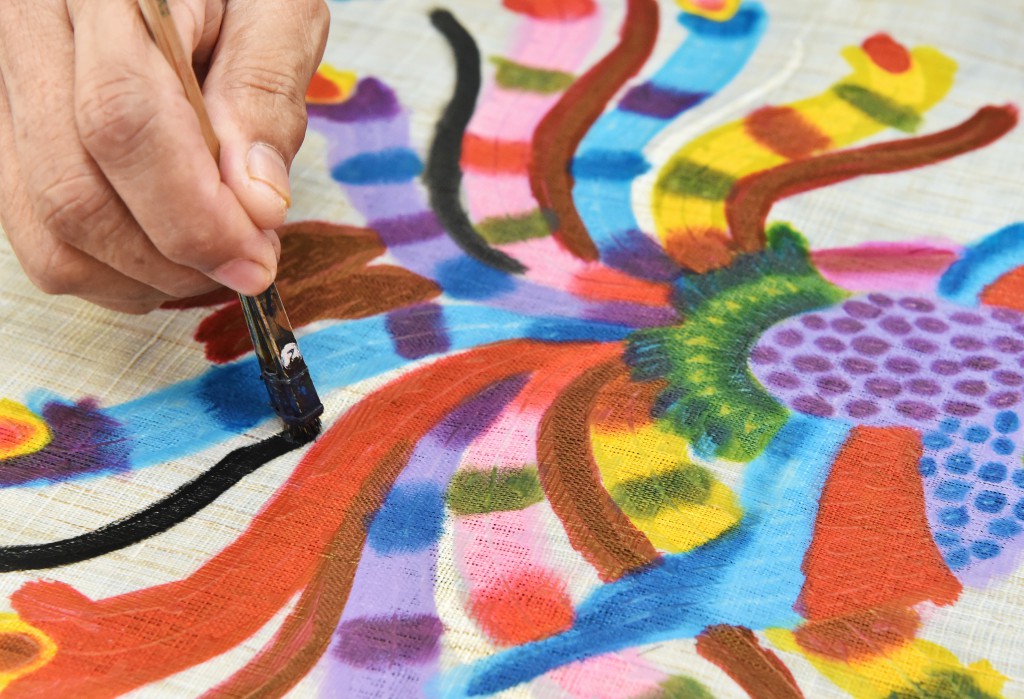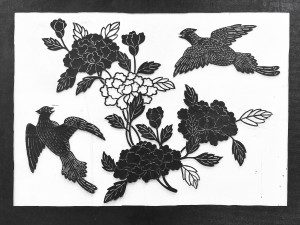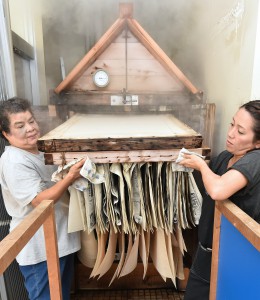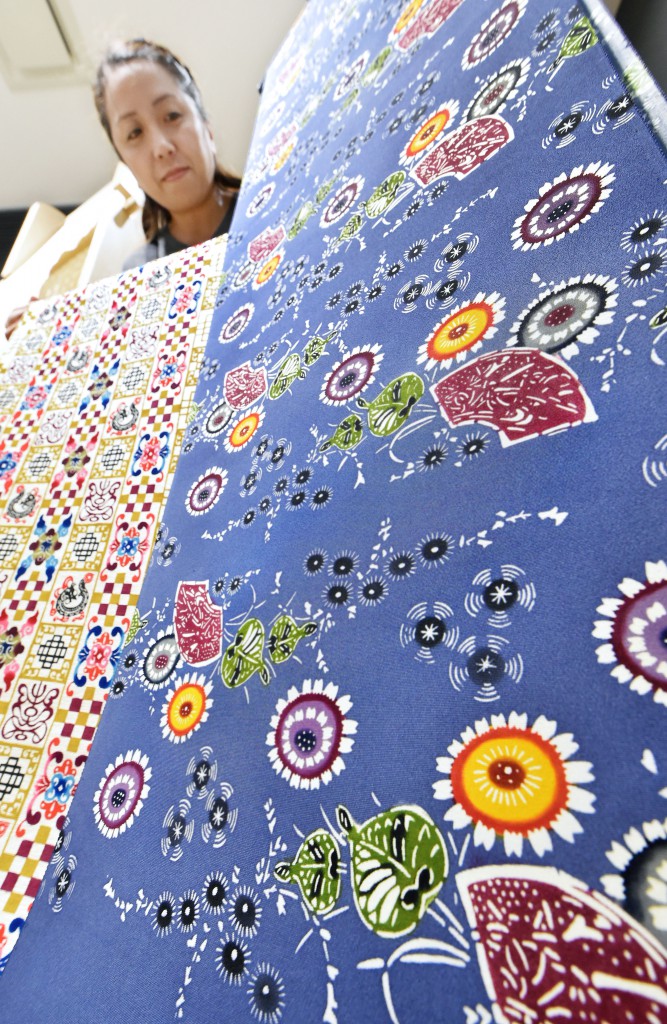
Colors are applied using brushes. Darker colors are placed on top repeatedly to add 3-dimensional impression (In Naha Traditional Craft Center)
Kotaro Yamada
– Ryukyu bingata dyed textile (Okinawa Prefecture) –
Bingata is a traditional Okinawan dyeing technique with a history of nearly 700 years. Local artisans draw pictures in vivid warm colors mainly on silk or cotton textiles, often using stencil papers with patterns cut out by hand. The tradition came out of the fateful crisis of war damages during the World War ll and is inherited by the local people with handcrafting skills.
Bingata uses mineral and botanical pigments to dye textiles in distinctive colors. The dyed products are used to make kimonos and obi (Japanese sashes) as well as furoshiki (Japanese wrapping cloth), noren (Japanese short split curtains) and other various items. First, a design is drawn onto a paper and the details are cut with a small blade to make a stencil paper. The patterns are mostly natural subjects such as landscape, plants and animals. Then, the stencil paper is put on a cloth and starch made from boiled rice, rice bran and water is applied to the cloth over the stencil to cover the portion where no color should be placed.
The artisans use pigments and colorants in approximately 15 different colors, typically red, yellow, blue and purple, applying them very carefully by hand and using brushes. When the patterns are completed, the dyed textile is put in a steamer to let the colors set, and finally, the fabric is washed with water to remove the starch. It can take five people two months to make one long piece of bingata textile.
Midori Ohshiro is a 67-year-old Okinawan artisan and a member of Ryukyu Bingata Business Cooperative. “Only handcrafting skills can give this warmth of bingata patterns,” she explained.
Ryukyu bingata supposedly originated in the 14th century. It evolved as the costumes for kings and royal families of the Ryukyu Kingdom, incorporating several different cultures imported from ancient China and other foreign countries.
However, during the latter stage of the World War ll, Okinawa became a battlefield and many of bingata tools are lost in fires. The handwork skills almost died out but people in Okinawa worked hard to restore the skills based on some patterns that barely escaped the war damages. In 1984, bingata became one of the officially designated traditional craft products of Japan.
“It took us enormous efforts but they paid off and we have successors to keep it going. We want to pass down this important culture of Okinawa for ever to younger generations,” said Ohshiro.
(July 5, 2015)




